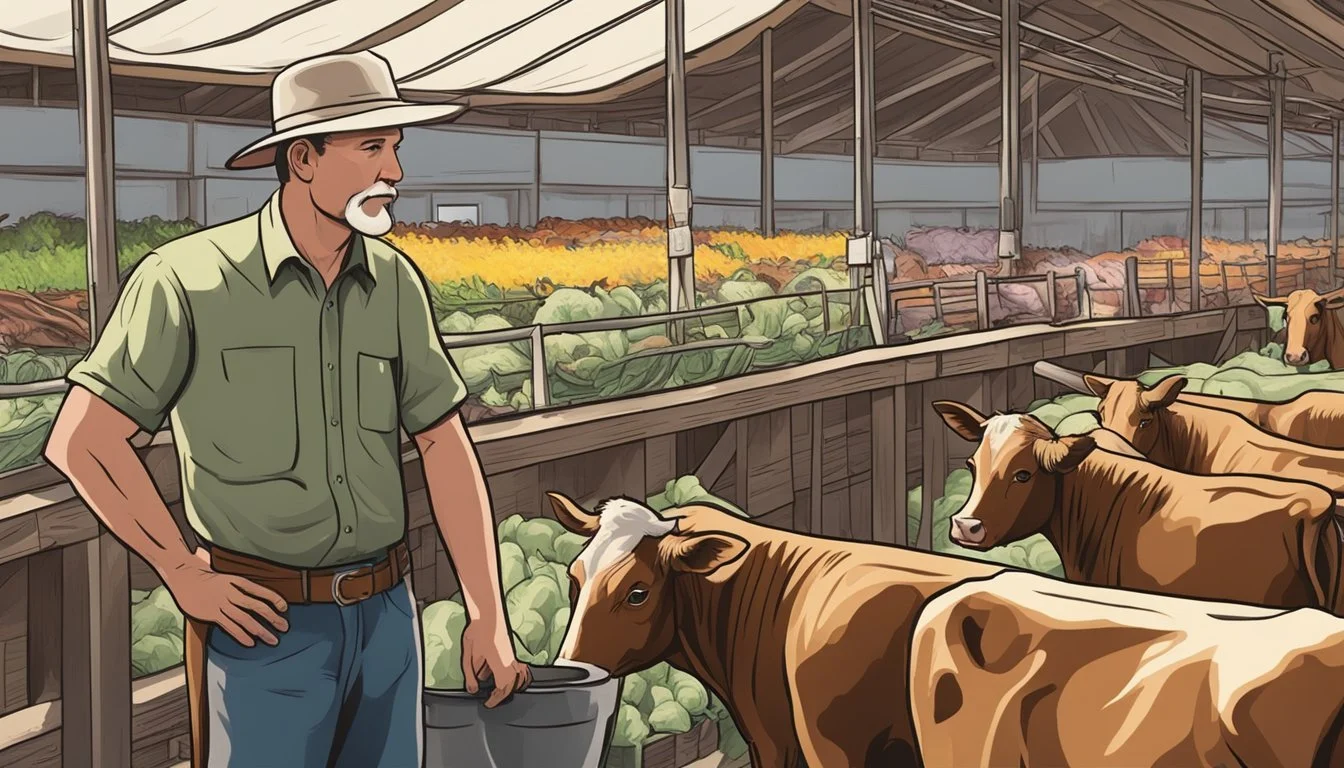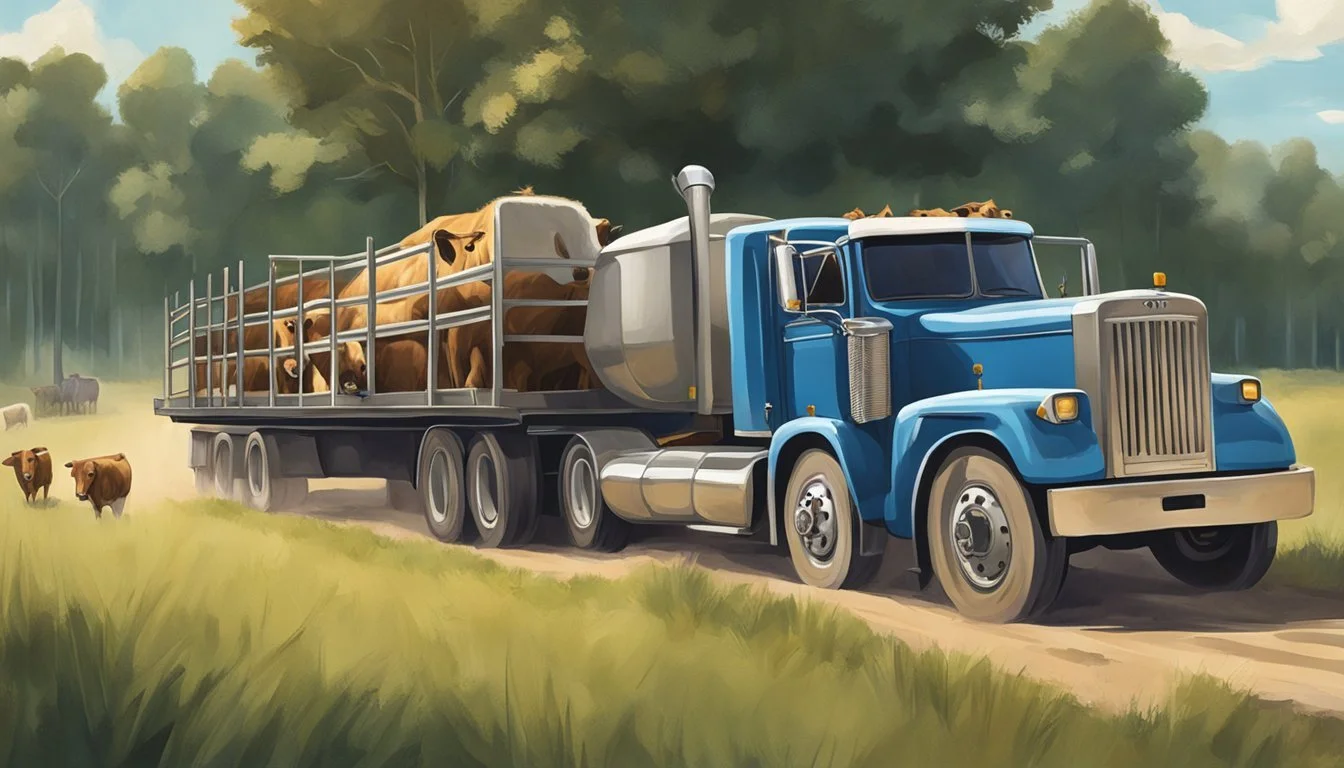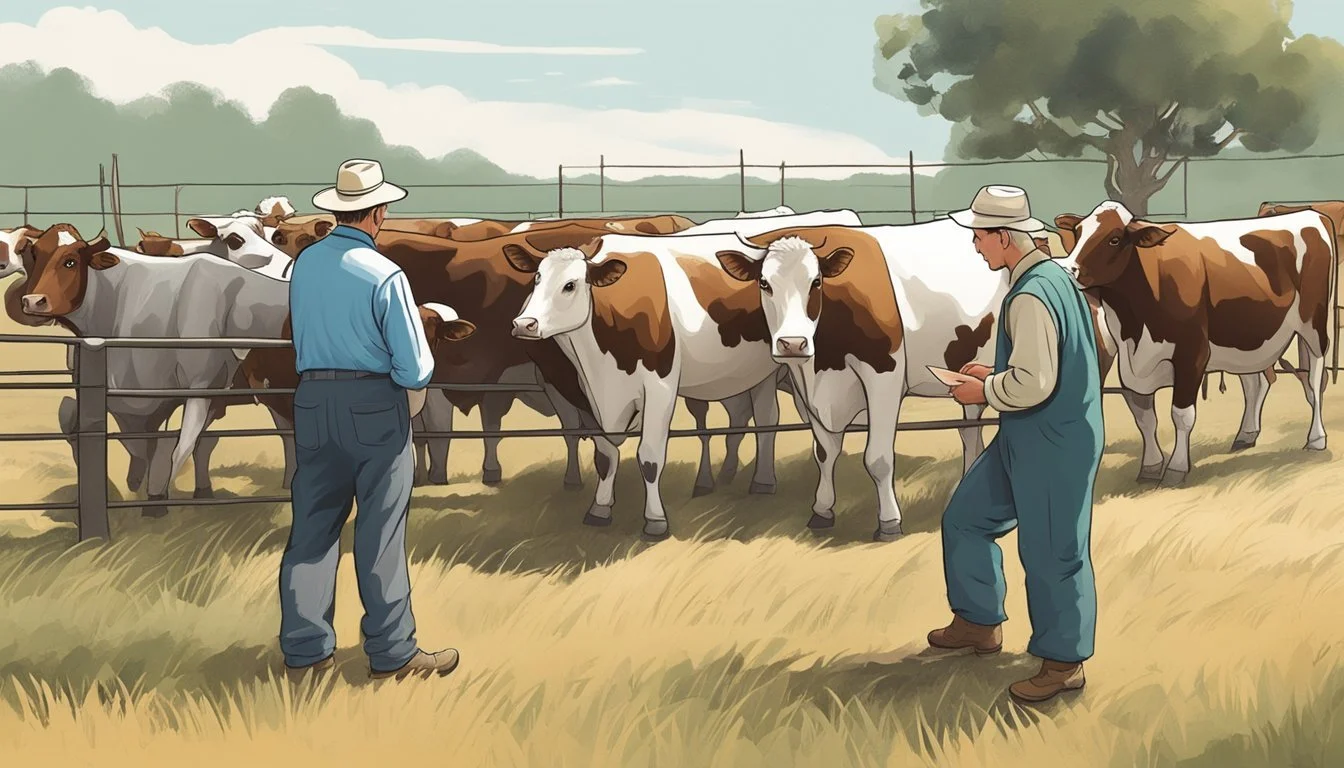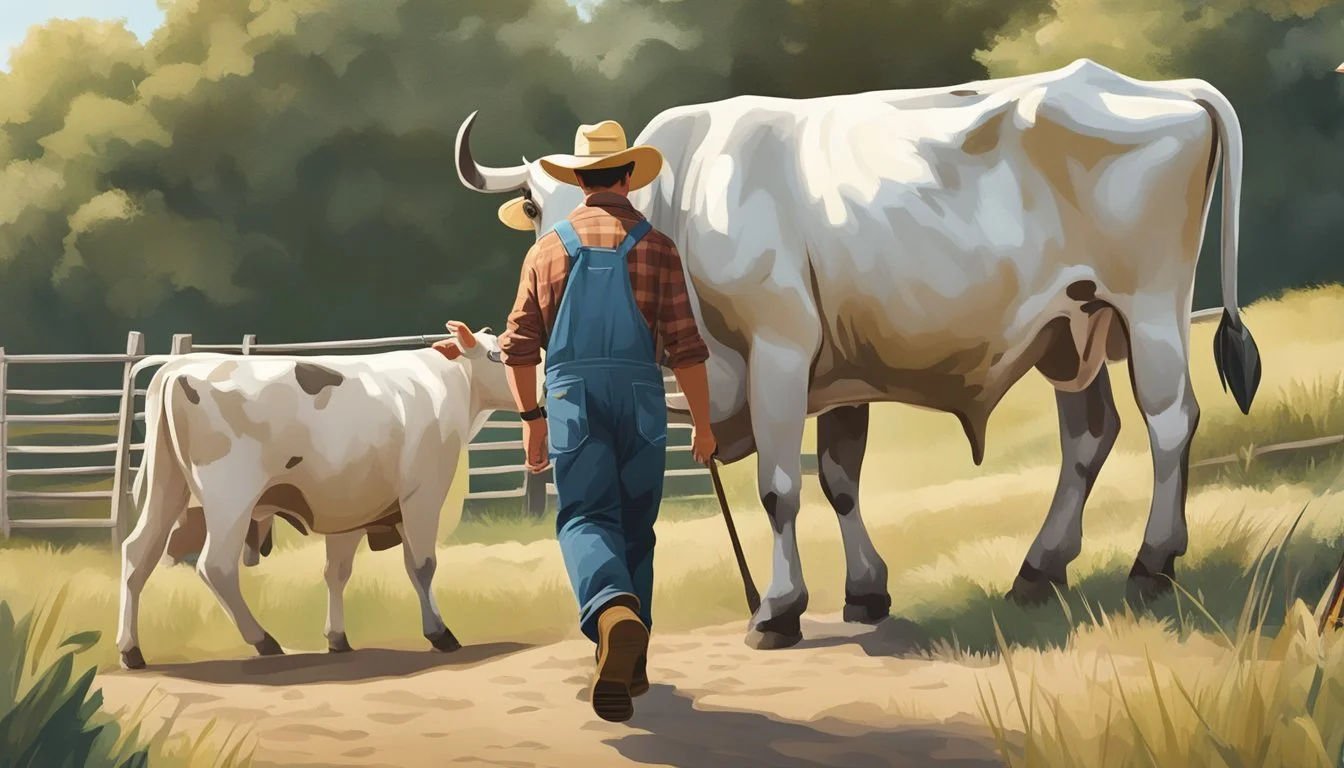What Should I Consider When Buying Cattle for the First Time
Essential Tips for New Buyers
Entering the world of livestock agriculture can be a significant step for enthusiasts looking to secure a long-term investment and take part in sustainable food production. Purchasing cattle is a considerable commitment, both financially and in terms of the time required for their care. For those taking the plunge into buying their first cow, it's essential to go into the process with eyes wide open, armed with knowledge to make informed decisions.
A prospective buyer must consider the purpose of the cattle—whether it's for dairy production, beef, or breeding. Each purpose entails differing needs and criteria for selection. Health is a paramount concern; a healthy cow has a smooth coat, well-formed features, and exhibits no signs of distress or illness. The livestock's age, breed, and genetic history also play vital roles in how they will integrate into a new environment while affecting future productivity and maintenance requirements.
It's advisable for new owners to learn about the specifics of the cattle breed they are interested in and the nuances of handling such animals. Moreover, it's beneficial to understand the cattle market, such as pricing trends and the best times to purchase, to ensure a fair investment. Conducting thorough research, engaging experts for guidance, and evaluating the livestock critically before purchase are crucial steps in transitioning successfully into cattle ownership.
Assessing Your Readiness
Before embarking on the journey to buy cattle, it's essential to evaluate one's readiness thoroughly. This involves a deep understanding of the commitment, recognizing the costs involved, ensuring adequate property for grazing, and preparing the necessary facilities.
Understanding the Commitment
Buying cattle is a significant commitment of time and resources. The prospective owner must be ready to dedicate daily attention to the animals, which includes feeding, health checks, and managing their environment. Whether a homesteader looking to obtain fresh milk or a rancher interested in beef production, one must approach cattle ownership with the intention of long-term commitment.
Initial and Ongoing Costs
The budget plays a critical role in cattle ownership. Initial costs include the purchase price of the cattle and potentially, transport. Ongoing expenses such as veterinary care, feed supplements, and labor can add up. Regular maintenance for fencing and machinery should also be accounted for in the financial planning.
Property Assessment
Adequate space for grazing is vital for cattle health and well-being. Prospective owners must assess their land’s carrying capacity to determine how many cattle it can support. Apart from grazing space, access to clean water is non-negotiable. One must also consider the natural shelter provided by the property's landscape and its suitability for the cattle's needs.
Facilities and Shelter Requirements
Proper facilities are necessary to ensure cattle safety and ease of management. This includes sturdy fencing, a handling facility, and a secure area for veterinary procedures or feeding. Suitable shelter must be provided to protect the animals from extreme weather. These structures must be robust and designed for ease of access and cleaning.
In each subsection, the reader must critically evaluate their situation concerning these aspects. Without proper planning and resources, one's venture into cattle ownership may face unexpected challenges.
Establishing Your Goals
Establishing clear objectives is essential before venturing into cattle ownership. Prospective owners should decide on the primary purpose of their cattle—be it for beef production or dairy purposes—and consider the role of breeding and genetics in achieving their goals.
Beef vs Dairy Purpose
When considering cattle for the first time, one must clearly decide whether the livestock will be raised for beef or dairy production. This decision will dictate the breed of cattle to purchase, as some are optimal for meat production, such as Angus or Hereford, while others like Holstein or Jersey excel in milk yield. For beef cattle, traits such as growth rate, meat quality, and feed conversion are paramount. In contrast, dairy cows should be evaluated for milk production, butterfat content, and udder health.
Breeding and Genetics Plans
The genetic composition of cattle is a pivotal aspect of livestock management, influencing factors such as temperament, production efficiency, and disease resistance. When starting a herd, one should have a breeding plan that aligns with their long-term objectives, considering traits that will enhance the productivity and sustainability of their livestock. This might involve choosing animals known for their robust genetics and potential to thrive in specific environmental conditions. Genetic planning is particularly important in breeding programs aiming to produce either beef cattle or dairy cows, as it can significantly impact the quality and quantity of the end product.
Selecting the Cattle
When purchasing cattle for the first time, it's crucial to be well-informed about breed characteristics, the age and size of the animals, their health status, and the temperament they possess. Making informed decisions in these areas is vital for the success of your cattle operation.
Breed-Specific Information
Selecting the right cattle breed is a foundational decision. Some breeds excel in dairy production, such as the Holstein or Jersey, while others like Angus or Hereford are preferred for beef. The Cattle Daily provides insights on choosing a breed suitable for your needs and environmental conditions. Understanding breed-specific requirements and productivity can drive your choice effectively.
Age and Size Considerations
The age and size of the cattle are indicative of their reproductive and growth stages. Heifers should be old enough to safely carry and birth calves, and young bulls should be mature enough for breeding. According to Beef Magazine, younger heifers born later might not be mature enough by breeding time, thus affecting productivity. It's practical to consider cattle that align with your operation size and growth plans.
Health and Body Condition
A healthy cow or bull presents with a smooth coat, and if the female is lactating, her udder should not be swollen or show signs of pain upon touch. The teats should be free from injuries and infections, as observed by Farmbrite. Checking for visible health indicators, such as body condition score, is essential. Cattle should exhibit cleanliness with no sign of distress or disease.
Choosing a Calm Disposition
A calm disposition is vital for safe handling and efficient management. Observing cattle behavior during selection can reveal much about their temperaments. It’s advisable to avoid animals that are overly flighty or nervous for ease of handling. As Beef Magazine suggests, consideration of disposition should lead to culling any cattle that pose a risk to handlers or other animals due to their unpredictability.
Where to Buy Cattle
When considering the purchase of cattle for the first time, one must know the most reliable places to make this significant investment. These options range from traditional methods to modern platforms, each with their benefits and considerations.
Auctions and Sale Barns
Livestock auctions and sale barns are time-tested venues where buyers can find a diverse selection of cattle. They typically offer a wide range of livestock in one location, which makes it easier to compare and select animals. However, buyers should be aware of the fast-paced nature of auctions and be prepared to make decisions quickly. It is also advisable to review the health and quality of cattle closely, as they come from various sources.
Pros: Wide selection, competitive pricing
Cons: Fast-paced, requires on-the-spot decision making
Directly from Farmers
Purchasing directly from farmers or cattle farming operations offers buyers a chance to gather extensive information about the cattle's history and breeding. This option fosters a direct relationship with the seller, which can be beneficial for future purchases or advice. Visiting the farm also allows buyers to see the conditions in which the cattle are raised.
Pros: Detailed cattle history, personal relationship with seller
Cons: Potentially limited selection compared to auctions
Online Platforms and Classifieds
The digital age has introduced online platforms and classifieds such as Craigslist, where buyers can find listings for cattle. These platforms are convenient as they allow buyers to narrow their search by breed, location, and price before making contact with the seller. Nonetheless, it's essential to exercise caution and ensure that a thorough inspection of the cattle is possible before any transaction.
Pros: Easy to search listings, convenient
Cons: Risk of misrepresentation, need for in-person inspection
Financial Considerations
When venturing into cattle ownership, one must grasp the nuances of not only cattle prices but also the comprehensive budget required for herd management and the ongoing costs associated with raising cattle.
Understanding Cattle Prices
Cattle prices fluctuate based on a range of factors including breed, age, gender, and market demand. For example, beef breeds like Angus or Hereford may command higher prices than other breeds. Heifers and young cows typically cost more than older cattle due to their longer productive life expectancy. Monitoring livestock market reports can aid in understanding the current trends in cattle prices.
Budgeting for Your Herd
Before purchasing cattle, it is essential to create a detailed budget that encompasses the initial investment and all foreseeable expenses. This budget should account for the cost of the cattle themselves, veterinary bills, feed costs, and any necessary farm equipment. It is also wise to allocate funds for unforeseen circumstances or emergencies.
Cost of Raising Cattle
The investment in cattle goes beyond the purchase price. Prospective owners should consider feed costs, which can be significant, especially in winter months when pasture grazing is unavailable. Veterinary care, including vaccinations and routine health checks, ensures the well-being of the herd but also adds to the expense. Shelter and fencing require an upfront investment as well as ongoing maintenance. By understanding these costs, one can make informed financial decisions in the endeavor to raise cattle.
Pre-Purchase Evaluation
When purchasing cattle for the first time, a comprehensive pre-purchase evaluation is crucial. This detailed assessment ensures that the buyer invests in livestock that meets their specific needs and is in good health.
Visual Inspection
During a visual inspection, check the animal's overall body condition and conformation. The coat should be smooth and free of bald spots. In terms of eyes, clear and bright eyes without any signs of discharge are essential. The nose should also be clear, indicating no respiratory issues. Buyers should pay attention to the cattle's mobility and stance, as this reflects their musculoskeletal health.
Health Records Review
A thorough review of health records provides insight into the cattle's medical history and vaccination status. One should ensure the animals are free from chronic diseases and have had all necessary vaccinations and deworming treatments. Any history of health issues or concerns should be carefully evaluated against the buyer's capacity to manage them.
Performance and Production Assessments
Performance and production assessments involve evaluating the cattle's past productivity, which is a good indicator of future performance. For dairy cattle, this includes analyzing milk production records, while for beef cattle, growth patterns and weight gain history are important. These metrics help buyers make informed decisions based on the cattle's ability to meet production goals.
By conducting these evaluations methodically, buyers can be more confident in their decision to purchase cattle.
Legal and Registration Tasks
When venturing into cattle farming, it is crucial to understand the legal requirements and registration processes to ensure a smooth transition of ownership. These tasks are not only a legal formality but also provide verifiable documentation about the cattle's lineage and health status.
Understanding Registration
Registered cattle typically come with the assurance of a documented lineage, which can be significant for breeding purposes and maintaining the quality of the herd. A new cattle farmer should examine whether the cattle they intend to purchase are registered with a recognized breed association. Registration documents provide detailed records of an animal's birth date, breed, and genetic line, which is valuable for tracking the pedigree and managing the genetics of a cattle herd.
Transfer of Ownership
After purchasing cattle, transferring ownership is a fundamental step. The process involves updating the national or regional livestock registry with the new owner's details. It includes submitting the necessary paperwork, such as the signed transfer of ownership document, often with a nominal fee. It’s also vital to ensure the transfer is recorded within the specific time frame stipulated by the registry. Failure to promptly record this change can lead to complications in establishing legal ownership, which might hinder future sale or transfer of the cattle.
Transportation and Acclimatization
When a first-time buyer transports and acclimates cattle, it is crucial to use the appropriate trailer and methods to help the animals adjust to their new environment with minimal stress.
Choosing the Right Trailer
The trailer is pivotal for safe and stress-free transportation. The right trailer for a homesteader should provide adequate space, ventilation, and security for the cattle. Key considerations include:
Size: It should be spacious enough to prevent overcrowding but not so large that animals can be injured by falling during transit.
Flooring: Non-slip flooring is essential to avoid injury.
Ventilation: Proper airflow prevents overheating and respiratory issues.
It's recommended to select a trailer designed specifically for livestock transport, facilitating a smoother ride for the animals.
Adjusting Cattle to New Environment
Acclimating cattle to a new environment involves gradual exposure and observation. Homesteaders should monitor their cattle for signs of stress or health issues. They can assist their cattle during this period by:
Familiarization: Allow the cattle to become accustomed to their new surroundings, including different feed types and water sources.
Following transport, it is imperative to provide cattle with a rest period to recover from the journey. For trips longer than four hours, cattle should rest for at least five hours.
Proper acclimation not only ensures the welfare of the cattle but also aids in maintaining their productivity and health after the transition.
After Purchase Care
After purchasing cattle, the caretaker's focus must shift to maintaining their well-being, which involves ensuring proper nutrition, monitoring health, and planning for breeding. Mastery of these elements determines the success and sustainability of a cattle operation.
Feeding and Nutrition
Feeding a balanced diet is critical for cattle health and productivity. For starters, new cattle owners should provide a mix of high-quality forage such as grass or hay, and supplements to meet nutritional requirements. It's important to understand the specific needs of cattle based on their age, weight, and purpose, whether they are raised for meat or milk. Consistency in feeding schedules and access to clean water is also vital.
Health Monitoring and Veterinary Care
Regular health monitoring is essential. Owners should look out for signs of illness including changes in appetite, activity level, and appearance. A proactive approach to veterinary care can prevent diseases from spreading. Routine vaccinations, deworming, and check-ups should be scheduled. In case of any health concerns, a qualified veterinarian should be consulted promptly to ensure swift treatment.
Breeding and Herd Expansion
When planning for breeding and herd expansion, one must consider both natural mating and artificial insemination as viable options. Selecting the right breeding stock is key to improving the herd's genetic quality and productivity. It's essential to keep accurate records of breeding cycles and to provide adequate care to pregnant cattle to ensure the health of both the cows and their offspring. Selecting a quality starter herd sets a strong foundation for a thriving cattle business.
Long-Term Management
Long-term management in cattle farming requires a clear strategy around herd management, intelligent culling, and replacement, as well as meticulous record keeping for continual improvement. These components are critical for the sustainability and profitability of the investment.
Herd Management Strategies
Effective herd management strategies focus on maintaining a healthy and productive breeding stock. Cattle farmers should ensure that they have a balanced ratio of bulls to cows and implement a breeding calendar that aligns with optimal market conditions and pasture availability. Nutrition plans should be tailored for different stages of cattle growth and reproductive status, and regular health checks are essential to prevent disease and maintain herd welfare.
Culling and Replacement
Culling is a necessary practice to remove underperforming or unhealthy animals from the existing herd, thus improving the overall genetic quality. Criteria for culling may include poor health, low reproductive performance, or advanced age. Replacement strategies must be planned to introduce new breeding stock that can enhance genetic traits, boost productivity and longevity. Investing in quality replacements is an investment in the future of the cattle operation.
Record Keeping and Data Analysis
Accurate record keeping and data analysis are indispensable components of long-term cattle farming management. They should track detailed information on each animal, including health records, reproduction history, growth rates, and lineage. Analysis of these records helps in making informed decisions about breeding, nutrition, and health management. This data-driven approach supports the longevity and financial health of the cattle farming enterprise.







